#Best Backend Framework
Explore tagged Tumblr posts
Text
When building a backend for your application, the decision between Python and Node.js can shape your project's performance, scalability, and development speed. Python is ideal for applications involving complex data processing and machine learning, while Node.js excels in high-performance, real-time apps. This article compares the strengths and weaknesses of both, helping you choose the best backend framework for your specific use case and development needs.
0 notes
Text
#digital marketing course in lucknow#best programming language for hacking#website designing course in lucknow#full stack framework#hotel digital marketing#best programing language for hacking#digital marketing training in lucknow#social media marketing in lucknow#best language for hacking#social media marketing projects for students#digital marketing course lucknow#summer training in lucknow#why we need data structure#django is frontend or backend#best digital marketing course in lucknow#social media marketing lucknow#online pr in digital marketing#digital marketing projects for students#best coding language for hacking#web development lucknow
0 notes
Text
Node.js Development: Everything You Need to Know in 2025
In 2025, Node.js development continues to be a powerful tool for building efficient, scalable, and real-time applications. This backend JavaScript framework has become a go-to technology for backend development, favoured by developers for its speed, flexibility, and vast ecosystem. Here’s everything you need to know about Node.js development trends, advantages, and key considerations in 2025.
Why Node.js Remains Popular in 2025
Node.js has gained a strong foothold in web and app development due to its high performance and ability to handle large volumes of simultaneous requests, making it ideal for data-intensive applications. Its non-blocking, event-driven architecture allows developers to build scalable web applications that can easily support thousands of concurrent users.
Key Node.js Trends to Watch in 2025
Serverless Architecture: Serverless is growing in popularity, and Node.js serverless applications fit perfectly with this trend. In a serverless environment, developers don’t need to manage server infrastructure; they focus instead on writing code. This approach can reduce development costs and improve scalability, making Node.js a key player in the serverless computing market.
Edge Computing: As demand for faster data processing rises, Node.js for edge computing is becoming crucial. By enabling data processing closer to the data source, Node.js helps reduce latency and improve application performance, particularly in real-time applications.
Microservices Architecture: Microservices are essential for large-scale, modular applications. Node.js, with its lightweight nature, is perfect for Node.js microservices architecture, allowing developers to build small, independent services that can be deployed and scaled individually.
Artificial Intelligence (AI) and Machine Learning (ML) Integration: In 2025, integrating AI and ML models into applications is a significant trend. Node.js with AI and ML is compatible with powerful machine-learning libraries, making it an attractive choice for developers looking to create intelligent applications.
Benefits of Using Node.js in 2025
High Performance: Node.js uses the V8 engine, offering impressive speed and efficient execution of JavaScript. This makes it suitable for applications requiring fast response times, such as real-time applications, chat applications, and IoT devices.
Rich Ecosystem: The Node.js ecosystem, including npm (Node Package Manager), gives developers access to a wide range of reusable modules and libraries. This Node.js ecosystem reduces development time and helps accelerate project timelines.
Cross-Platform Compatibility: Node.js Development cross-platform applications work well across different platforms, making it easier for developers to build applications that run seamlessly on various operating systems.
Scalability: The non-blocking, asynchronous architecture of Node.js for scalable applications makes it easy to scale horizontally, supporting increased workloads as businesses grow.
Best Practices for Node.js Development in 2025
Leverage TypeScript: Using TypeScript with Node.js enhances code quality and reduces bugs, making it a valuable addition to any development project.
Prioritize Security: Security is a primary concern for developers, particularly in 2025, as cyber threats grow more sophisticated. Implementing Node.js security best practices, like input validation and rate limiting, is essential for protecting applications.
Adopt CI/CD Pipelines: Continuous integration and continuous deployment (CI/CD) pipelines streamline development and ensure faster, more reliable Node.js deployments.
Conclusion
Node.js continues to be a versatile and high-performance choice for backend development in 2025. Its adaptability to trends like serverless architecture, microservices, and AI integration makes it a prime technology for building future-ready applications. By leveraging the power of Node.js developers, businesses can develop scalable, efficient, and intelligent solutions to stay ahead in the digital landscape.
#Node.js development trends 2025#Node.js development best practices#Node.js for web development 2025#latest features in Node.js 2025#Node.js performance optimization#Node.js vs other frameworks 2025#Node.js for backend development#Node.js security best practices#scalable Node.js applications#future of Node.js development#full-stack development with Node.js#Node.js development services USA and UK#how to hire Node.js developers#Node.js in microservices architecture#Node.js for real-time applications#top Node.js frameworks 2025#Node.js development tools#asynchronous programming in Node.js#Node.js for enterprise solutions#Node.js and serverless architecture
1 note
·
View note
Text
10 Best Frameworks for Front-End Development in 2024

The front-end development ecosystem is constantly evolving, and 2024 is no exception. With an increasing focus on user experience, performance, and scalability, choosing the right framework can make all the difference in building efficient, modern web applications. Here are the 10 best frameworks for front-end development in 2024.
1. React
React continues to dominate the front-end space in 2024. Maintained by Facebook, it’s a JavaScript library (often called a framework) that enables developers to build dynamic, responsive user interfaces with reusable components. React’s virtual DOM ensures fast updates, making it ideal for high-performance applications.
Key Features:
Component-based architecture
Virtual DOM for faster rendering
Strong community and ecosystem
Support for React Native for mobile apps
2. Vue.js
Vue.js has gained popularity for its simplicity and flexibility. It’s a progressive framework, meaning you can use as much or as little of it as you need, making it an excellent choice for both small projects and large-scale applications.
Key Features:
Reactive two-way data binding
Focused on ease of integration
Lightweight and flexible
Growing plugin ecosystem
3. Angular
Developed by Google, Angular is a full-fledged framework for building robust web applications. It provides a complete set of tools for developers, including dependency injection, routing, and a powerful CLI (Command Line Interface). Angular’s TypeScript-based architecture ensures strong typing and scalable code.
Key Features:
Two-way data binding and dependency injection
Built-in tools for routing, forms, and HTTP services
TypeScript support for scalable applications
Robust testing capabilities
4. Svelte
Svelte has emerged as a game-changer in front-end development. Unlike other frameworks, Svelte shifts much of the work from the browser to the compile step. This results in faster, more efficient applications. Svelte doesn’t use a virtual DOM, which gives it a unique performance edge.
Key Features:
No virtual DOM for faster performance
Compile-time optimization
Simpler and more intuitive syntax
Minimal boilerplate code
5. Next.js
Next.js, built on top of React, is designed for server-side rendering (SSR) and static site generation (SSG). This makes it an excellent choice for SEO-friendly websites and applications that need fast loading times. In 2024, Next.js remains a top choice for building dynamic, high-performance web apps.
Key Features:
Server-side rendering (SSR) and static site generation (SSG)
Easy integration with React
Built-in API routes
Powerful routing and pre-rendering features
Read More: 10 Best Frameworks for Front-End Development in 2024
#backend frameworks#front end development#wordpress website development#webtracktechnologies#wordpress developer#custom website development services#web designing#front end developer#best web development services in usa
0 notes
Text
10 Best Backend Frameworks in 2024
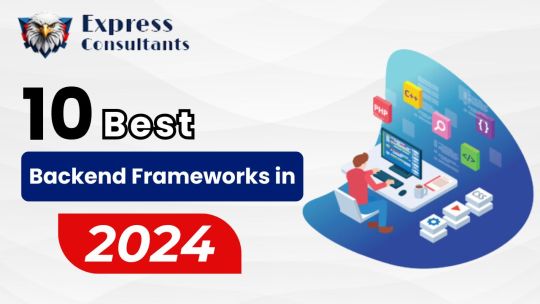
The backbone of any successful web or mobile application often lies in the framework that powers it. Choosing the best backend framework is no longer a luxury—it’s a necessity for building scalable, efficient, and fast applications. So, what’s changed in 2024? And which backend frameworks are leading the pack? Let’s dive into it.
What Are Back-End Frameworks?
In simple terms, backend frameworks are the unsung heroes behind the curtain, ensuring that everything on a website or app functions smoothly. When you use an app and click a button, the backend framework ensures that the right data is fetched, processed, and sent back to the front end without hiccups. It’s like the kitchen in a restaurant—you don’t see it, but you rely on it to make everything work.
These frameworks simplify the development process, providing pre-built modules and structures so developers don’t have to start from scratch every time. It’s like having a LEGO set instead of building bricks from mud. Pretty cool, right? In 2024, the demand for more sophisticated frameworks has skyrocketed, and developers are spoiled for choice.
Why Use a Backend Framework?
Why reinvent the wheel when backend frameworks offer tried-and-true solutions for common issues? Here are a few reasons:
Faster Development: Pre-built components save time.
Scalability: Designed to grow with your application.
Security: Robust frameworks come with built-in security features.
Alright, enough chit-chat. Let’s talk about the best backend frameworks of 2024.
To read more visit our blog : -10 Best Backend Frameworks in 2024
0 notes
Text
Explore These Exciting DSU Micro Project Ideas
Explore These Exciting DSU Micro Project Ideas Are you a student looking for an interesting micro project to work on? Developing small, self-contained projects is a great way to build your skills and showcase your abilities. At the Distributed Systems University (DSU), we offer a wide range of micro project topics that cover a variety of domains. In this blog post, we’ll explore some exciting DSU…
#3D modeling#agricultural domain knowledge#Android#API design#AR frameworks (ARKit#ARCore)#backend development#best micro project topics#BLOCKCHAIN#Blockchain architecture#Blockchain development#cloud functions#cloud integration#Computer vision#Cryptocurrency protocols#CRYPTOGRAPHY#CSS#data analysis#Data Mining#Data preprocessing#data structure micro project topics#Data Visualization#database integration#decentralized applications (dApps)#decentralized identity protocols#DEEP LEARNING#dialogue management#Distributed systems architecture#distributed systems design#dsu in project management
0 notes
Text
Top 10 Java Frameworks for Web Development in 2024

Java is always the language taken on priority when it comes to software development. And no doubt, it is a programming language most extensively used as well.
Whenever we think of building web applications or starting a new project, choosing the right set of development tools is of utmost importance. Java frameworks make it to the top choice in such cases since they are not only reliable but efficient as well.
But with so many options available out there, it can really get you confused about which Java frameworks you should consider for your projects. This blog post is going to be all about that. We have listed out some of the best Java frameworks for web development in 2024 for you.
But before diving right into it, let’s walk through Java frameworks to get a basic understanding about them.
What are Java Frameworks?
Java frameworks are basically a collection of pre-written codes. These are used by developers and programmers to develop web applications. These Java development frameworks control hardware, communicate with system applications, and process input. They help save time by writing the code for a developer. Since Java is a backend technology, these frameworks come handy for backend development.
Benefits of Java frameworks in web development
Since they already consist of pre-written codes, there is no need to write codes individually.
Makes tasks and processes quick by reducing the time, thus increasing efficiency.
Offer a diverse range of features and options for developers to explore and choose from.
They provide support and help developers with problem-solving.
Always perform 100% and are reliable and secure.
Top Java frameworks for 2024:
1. Spring:
Spring Framework is one of the best open-source frameworks which has been built for the entire software development process in Java. These are also compatible with XML configurations and can establish JDBC connections. Some of its features include externalized configurations, admin features, properties files, and web development.
2. Hibernate:
Hibernate framework can extend Persistence API Support in Java. It is an ORM tool which is lightweight and high-performing. It does performance optimization so you do not have to worry about the implementations. It enhances developer’s productivity and efficiency.
3. Struts:
Struts framework is majorly used for web applications and is based on technologies such as XML, JSP, etc. Some of its key features include integration support, configurable MVC components, template support, and more.
4. Grails:
Grails framework is beginner-friendly and written in Groovy, which is similar to Java but has more features. Its key features include seamless Java integration, plugin library, spring boot foundation, etc.
5. Vaadin:
Vaadin framework supports cross-platform compatibility. Style alternatives from Java, two built-in themes, and deep linking support are some of its key features.
6. Java Server Faces (JSF):
It works with technologies Java serves pages and Java Servlet API. It has been developed by Oracle and is based on MVC architecture. It supports automated state management and multiple output formats.
7. Play:
Play framework is written in Scala and supports both Java and Scala. It is fault-tolerant and highly flexible. It comes with built-in testing tools and has a hit refresh workflow.
8. Google Web Toolkit (GWT):
It has an open-source Java community to ensure applications are made using GWT. It is extremely developer-friendly and supports a wide range of APIs. It also provides cross-border portability.
9. Dropwizard:
It is great for developing RESTful web services. It enables rapid prototyping and is operations-friendly. It is compatible with both external and open-source libraries.
10. Apache Wicket
It is a component based framework that provides integration support. It is extremely fast and lightweight. It follows the POJO model and is based on JSP. It is also highly agile.
Conclusion
These were some of the best Java frameworks we have shortlisted for you. Java frameworks make for a popular choice especially when you are considering making enterprise applications. These frameworks prove helpful for a developer to improve scalability and productivity.
Also, we suggest readers to stay updated with the trends in the Java ecosystem since these frameworks also keep on improving their features. Visit us at Intelliatech!!!
#web applications#Vaadin Framework#Play Framework#performance optimization#Struts Framework#Apache Wicket#backend development#best Java framework#developer productivity#Dropwizard#enterprise applications#google web tool#Google Web Toolkit#Grails Framework
0 notes
Text
Helpful Insight is one of the best Node.js Application Development Companies in India. We are developing various Node.js applications with an experienced team of Node.js developers. Our developers are pros at working with real-time, scalable, and multilayered applications based on node.js.
Our team at Helpful Insight includes Node JS developers who develop rapid and scalable network web applications in Bharat. NodeJS is an excellent platform for developing high-performance and reliable network applications, by using JavaScript. Our NodeJS developers know how to deliver tailor-made web applications, designed for rapid scaling, to fit your specific business needs.
Web applications requiring low latency, high throughput, and high scalability are ideally developed using node js development services. Our NodeJS developers have extensive experience in developing applications that solve real business problems while offering easy maintenance. We understand that you require an application capable of processing big data sets and handling high-traffic volumes. Hire Node JS Developers for your business will meet all requirements and give you the best experience possible.
We ensure to deliver a dependable, secure, and scalable web application to you. Rest assured, our developers will do a tremendous job providing you with a web application and backend development that surpasses all of your wishes and hopes. Let us help you design that web application you have always desired, contact us today.
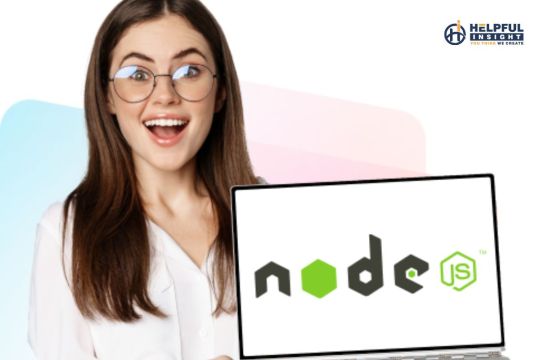
#best node js backend framework#express js#node js applications examples#best node.js ide#node-js application example github#node js application example code#node js framework list
0 notes
Text
In full-stack development, both the frontend and backend are integral parts of creating a seamless user experience. Backend frameworks play a crucial role in the server-side logic, database interaction, and overall functionality that supports the frontend interface. A robust backend framework ensures that the application can handle business logic, user authentication, data storage, and real-time functionality with efficiency and scalability. When developers choose the best backend framework, it’s essential that it aligns with the project’s requirements, be it handling API requests, integrating databases, or supporting microservices architecture.
0 notes
Text
#digital marketing course in lucknow#best programming language for hacking#website designing course in lucknow#full stack framework#hotel digital marketing#best programing language for hacking#digital marketing training in lucknow#social media marketing in lucknow#best language for hacking#social media marketing projects for students#digital marketing course lucknow#summer training in lucknow#why we need data structure#django is frontend or backend#best digital marketing course in lucknow#social media marketing lucknow#online pr in digital marketing#digital marketing projects for students#best coding language for hacking#web development lucknow
0 notes
Text
Why Python Will Thrive: Future Trends and Applications
Python has already made a significant impact in the tech world, and its trajectory for the future is even more promising. From its simplicity and versatility to its widespread use in cutting-edge technologies, Python is expected to continue thriving in the coming years. Considering the kind support of Python Course in Chennai Whatever your level of experience or reason for switching from another programming language, learning Python gets much more fun.

Let's explore why Python will remain at the forefront of software development and what trends and applications will contribute to its ongoing dominance.
1. Artificial Intelligence and Machine Learning
Python is already the go-to language for AI and machine learning, and its role in these fields is set to expand further. With powerful libraries such as TensorFlow, PyTorch, and Scikit-learn, Python simplifies the development of machine learning models and artificial intelligence applications. As more industries integrate AI for automation, personalization, and predictive analytics, Python will remain a core language for developing intelligent systems.
2. Data Science and Big Data
Data science is one of the most significant areas where Python has excelled. Libraries like Pandas, NumPy, and Matplotlib make data manipulation and visualization simple and efficient. As companies and organizations continue to generate and analyze vast amounts of data, Python’s ability to process, clean, and visualize big data will only become more critical. Additionally, Python’s compatibility with big data platforms like Hadoop and Apache Spark ensures that it will remain a major player in data-driven decision-making.
3. Web Development
Python’s role in web development is growing thanks to frameworks like Django and Flask, which provide robust, scalable, and secure solutions for building web applications. With the increasing demand for interactive websites and APIs, Python is well-positioned to continue serving as a top language for backend development. Its integration with cloud computing platforms will also fuel its growth in building modern web applications that scale efficiently.
4. Automation and Scripting
Automation is another area where Python excels. Developers use Python to automate tasks ranging from system administration to testing and deployment. With the rise of DevOps practices and the growing demand for workflow automation, Python’s role in streamlining repetitive processes will continue to grow. Businesses across industries will rely on Python to boost productivity, reduce errors, and optimize performance. With the aid of Best Online Training & Placement Programs, which offer comprehensive training and job placement support to anyone looking to develop their talents, it’s easier to learn this tool and advance your career.

5. Cybersecurity and Ethical Hacking
With cyber threats becoming increasingly sophisticated, cybersecurity is a critical concern for businesses worldwide. Python is widely used for penetration testing, vulnerability scanning, and threat detection due to its simplicity and effectiveness. Libraries like Scapy and PyCrypto make Python an excellent choice for ethical hacking and security professionals. As the need for robust cybersecurity measures increases, Python’s role in safeguarding digital assets will continue to thrive.
6. Internet of Things (IoT)
Python’s compatibility with microcontrollers and embedded systems makes it a strong contender in the growing field of IoT. Frameworks like MicroPython and CircuitPython enable developers to build IoT applications efficiently, whether for home automation, smart cities, or industrial systems. As the number of connected devices continues to rise, Python will remain a dominant language for creating scalable and reliable IoT solutions.
7. Cloud Computing and Serverless Architectures
The rise of cloud computing and serverless architectures has created new opportunities for Python. Cloud platforms like AWS, Google Cloud, and Microsoft Azure all support Python, allowing developers to build scalable and cost-efficient applications. With its flexibility and integration capabilities, Python is perfectly suited for developing cloud-based applications, serverless functions, and microservices.
8. Gaming and Virtual Reality
Python has long been used in game development, with libraries such as Pygame offering simple tools to create 2D games. However, as gaming and virtual reality (VR) technologies evolve, Python’s role in developing immersive experiences will grow. The language’s ease of use and integration with game engines will make it a popular choice for building gaming platforms, VR applications, and simulations.
9. Expanding Job Market
As Python’s applications continue to grow, so does the demand for Python developers. From startups to tech giants like Google, Facebook, and Amazon, companies across industries are seeking professionals who are proficient in Python. The increasing adoption of Python in various fields, including data science, AI, cybersecurity, and cloud computing, ensures a thriving job market for Python developers in the future.
10. Constant Evolution and Community Support
Python’s open-source nature means that it’s constantly evolving with new libraries, frameworks, and features. Its vibrant community of developers contributes to its growth and ensures that Python stays relevant to emerging trends and technologies. Whether it’s a new tool for AI or a breakthrough in web development, Python’s community is always working to improve the language and make it more efficient for developers.
Conclusion
Python’s future is bright, with its presence continuing to grow in AI, data science, automation, web development, and beyond. As industries become increasingly data-driven, automated, and connected, Python’s simplicity, versatility, and strong community support make it an ideal choice for developers. Whether you are a beginner looking to start your coding journey or a seasoned professional exploring new career opportunities, learning Python offers long-term benefits in a rapidly evolving tech landscape.
#python course#python training#python#technology#tech#python programming#python online training#python online course#python online classes#python certification
2 notes
·
View notes
Text
The Ultimate Developer’s Guide to STON.fi API & SDK Demo App

In the fast-paced world of blockchain and decentralized finance (DeFi), efficiency is everything. Developers don’t have time to manually configure and troubleshoot every feature from scratch. What they need is a plug-and-play solution that simplifies complex integrations while maintaining flexibility.
That’s exactly what the STON.fi API & SDK Demo App delivers. This tool isn’t just a sample—it’s a fully functional blueprint designed to help developers seamlessly integrate STON.fi’s token swap functionalities into their projects.
Whether you're an independent developer, part of a startup, or working with an established blockchain project, this demo app can save you hours of coding and debugging while ensuring a smooth user experience.
Let's break it down into why this tool matters, what it offers, and how you can make the most of it.
Why Every Developer Should Pay Attention to This Tool
Building DeFi applications requires precision, speed, and reliability. You’re dealing with real-time token swaps, liquidity pools, and user funds—there’s no room for error.
Developing a decentralized exchange (DEX) or any other blockchain application means working with smart contracts, APIs, and SDKs. The STON.fi API & SDK Demo App eliminates the complexity by providing a ready-made environment that demonstrates how STON.fi’s swap function operates in real-time.
Rather than starting from zero, developers can study, test, and integrate working solutions—accelerating their workflow and reducing risks.
Key Features That Make a Difference
The STON.fi API & SDK Demo App isn’t just a basic code snippet; it’s a structured, well-designed tool for developers looking to integrate token swaps efficiently. Here’s what makes it stand out:
1. Full-Scale Swap Functionality
The demo app provides a complete token swap system, showing exactly how transactions are executed. It includes all the necessary elements, such as price calculations, transaction confirmations, and seamless execution on the TON blockchain.
2. Clean, Modular Code for Easy Integration
Well-documented and structured code allows developers to adapt the swap function to their own projects. This modular approach makes customization straightforward, ensuring that developers don’t have to modify complex backend structures.
3. Real-Time Data & Execution
Blockchain transactions happen in real-time, so any delay or miscalculation can impact the user experience. This demo app mirrors actual trading conditions, allowing developers to test how their systems will function under real-world circumstances.
4. Compatibility Across Different DeFi Platforms
Whether you're building a DEX, a liquidity management system, or a DeFi dashboard, this app is flexible enough to fit into various use cases. Developers can integrate the swap function without restructuring their entire application.
How Developers Can Use This Tool to Their Advantage
1. Speed Up Development Time
Instead of writing swap functionalities from scratch, developers can focus on building unique features and optimizing user experience while leveraging STON.fi’s ready-made framework.
2. Reduce Errors & Improve Security
Errors in DeFi transactions can lead to financial losses or security vulnerabilities. Since the STON.fi API & SDK Demo App is already tested and optimized, integrating its features helps developers avoid common mistakes.
3. Learn & Implement Best Practices
For developers new to blockchain integrations, this demo app serves as a learning resource. Studying how STON.fi’s swap function is structured provides valuable insights into writing efficient, scalable, and secure blockchain applications.
4. Scale DeFi Projects Without Hassle
As blockchain projects grow, they need scalable, efficient, and user-friendly solutions. The STON.fi demo app ensures that token swaps remain fast and seamless, regardless of transaction volume.
Who Should Use the STON.fi API & SDK Demo App
This tool is built for a wide range of developers, including:
Blockchain Engineers – Those integrating token swaps, liquidity pools, and DeFi features into their projects.
DeFi Startups – Teams looking for efficient solutions without spending months on development.
Crypto Enthusiasts – Developers exploring blockchain functionalities and testing real-world DeFi integrations.
Tech Entrepreneurs – Anyone looking to build scalable financial applications on the TON blockchain.
Final Thoughts: A Must-Have for Blockchain Developers
For any developer working in the DeFi and blockchain space, the STON.fi API & SDK Demo App is an invaluable resource. It streamlines the process of integrating token swaps, saves development time, and ensures that applications run smoothly and efficiently.
With clear documentation, real-time execution, and a flexible framework, this tool isn’t just a demo—it’s a blueprint for success. Whether you’re building your first DeFi project or optimizing an existing platform, this resource is designed to help you get the job done faster and better.
For developers who prioritize efficiency, security, and scalability, this is a game-changing tool that simplifies one of the most critical aspects of DeFi application development.
4 notes
·
View notes
Text
What is Mern stack And Its importance? Before that I will Tell you the best institute for Mern stack course in Chandigarh.

What is Mern stack?
MERN Stack is a popular JavaScript-based technology stack used for building full-stack web applications. It consists of four key technologies:
MongoDB: A NoSQL database that stores data in a flexible, JSON-like format.
Express.js: A lightweight and fast backend framework for Node.js.
React.js: A front-end JavaScript library for building user interfaces.
Node.js: A runtime environment that allows JavaScript to run on the server side.
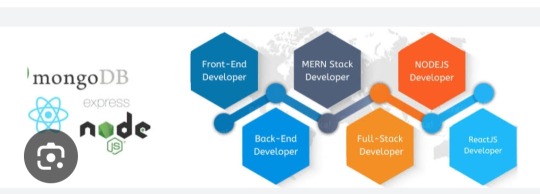
Importance of Mern Stack :
Full-Stack JavaScript – Uses JavaScript for frontend and backend, simplifying development.
High Performance – Node.js ensures fast, scalable applications.
Cost-Effective – Open-source, reducing development costs.
Rapid Development – React’s reusable components speed up UI building.
Flexibility – Suitable for web apps, SPAs, eCommerce, and real-time applications.
Scalability – MongoDB handles large data efficiently.
Strong Community Support – Large developer base ensures continuous updates and support.
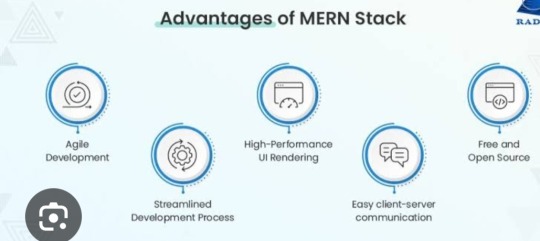
Now i will tell you the best institute for Mern stack course in Chandigarh .
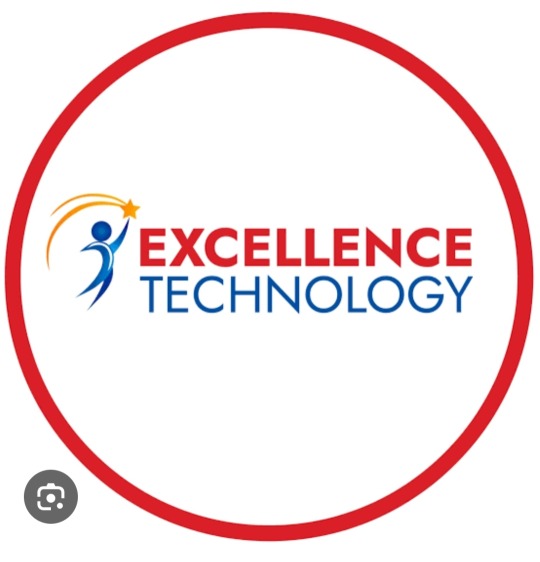
Excellence Technology is a leading EdTech (Educational technology) company dedicated to empowering individuals with cutting -edge IT skills and bridging the gap between education and industry demands. Specializing in IT training ,carrer development, and placement assistance ,the company equipts learners with the technical expertise and practical experience needed to thrive in today's competitive tech landscape. We provide IT courses like python ,Full stack Development, Web Design ,Graphic Design and Digital Marketing.
Contact Us for more details: 93177-88822
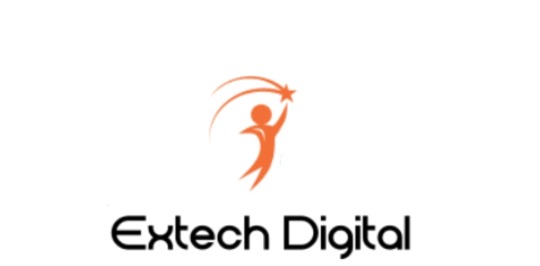
Extech Digital is a leading software development company dedicated to empowering individuals with cutting -edge IT skills and bridging the gap between education and industry demands. Specializing in IT training ,carrer development, and placement assistance ,the company equipt learners with the technical expertise and practical experience needed to thrive in today's competitive tech landscape. e provide IT courses like Python ,Full stack Development, Web Design ,Graphic Design and Digital Marketing.
Contact Us for more details: 93177-88822

Excellence academy is a leading software development company dedicated to empowering individual with cutting edge IT skills and bridging the gap between education and industry demands.specializing in IT training, career development, and placement assistance, the company equits learners with the technical expertise and practical experience needed to thrive in today's landscape. We provide IT courses like python, full stack development,Web design, and Digital marketing.
Contact Us for more details: 93177-88822
About Author
Nikita Thakur
Mern stack AI Developer/ 2+ years of experience
Excellence technology
Professional summary
Nikita thakur is a skilled MERN Stack AI Developer with over 2 years of experience at Excellence Technology. Proficient in MongoDB, Express.js, React.js, and Node.js, she integrates AI solutions to build scalable, high-performance web applications. Nikita excels in developing innovative solutions, enhancing user experiences, and driving business growth through technology.
2 notes
·
View notes
Note
Would you mind sharing a little about how you made your website for sharing your art? I want to make one, but I'm not sure where to start.
Not at all!
So, what I did was write my site in HTML and CSS from scratch and then hosted it on Neocities. Which, for a little bit of background, I had a li'l leg up on because I learned HTML in high school and then picked both it and CSS back up recently for my day job, and my partner was a huge help in understanding some of the backend type stuff for editing and adding a bit of Javascript. It has its pros and cons versus using something like Squarespace, or even using a framework to help shortcut the HTML/CSS--some stuff on the page is still a little broken, and I haven't fixed it yet!
If you're interested in going down the same path I did, there are lots of resources available! I started with (the free parts of) Codecademy, but Neocities itself has a page on learning skills for website building, and personally if I was going to start over I think that's where I'd begin. You can find that here: https://neocities.org/tutorials
Otherwise, if picking that up is too intimidating or time consuming (very understandable!) you can look into WYSIWYG ("what you see is what you get") editors like Squarespace, Wordpress, or Wix, which I believe are more built to drag and drop page elements onto a site so you can see it as its being built, and you don't have to mess with the code part (unless you want to!).
I hope that helps! If you've got questions, I can try to assist--though I'm not sure I'm the best at explaining stuff, haha~
#website stuff#catch me evangelizing for neocities#I think they are great!#I pay for their hosting but they have a free version too!#I really appreciate that they're collecting resources to help people build websites again#in this day and age of social media#but there are lots of ways to build a website#some that I don't even know about!#aaand even more advanced stuff!#though I'm not gonna talk about that as much because a. I know less about it and b. I'm not sure what all you're looking for!#ask
10 notes
·
View notes
Text
Education_Developer Project Lifecycle
I see a lot of people here on codeblr want to start some project but, not really know the best way to get started. To rectify this, hear is my very in depth guide on how to get started. Read this entire post (some of these are started early but its milestone is later).
Note, I highly suggest the use of Github and will be referencing some things that are specific to it (like Wikipedia pages). If you prefer some other method that's fine just be aware you may be making your life harder than it needs to be.
Milestone 1: Form Teams
Find your people, exchange contact information and determine a time to meet up, consistently. If you are working solo, ignore some of the instructions for this section. That is not to say ignore the parts about consistency and time management. In fact, because you are working solo that should be even more important.
At the first meeting establish chat service (teams, slack, google chat, discord). Establish the frequency of the meetings and how often everyone should check their messages (ex: every 24 hours). Discuss the options about the project.
Platform: Android, django, iOS, react native, etc.
IDE: Xcode, WebStorm, VSCode, etc. Note that modern IDEs now have built-in methods for sharing your editor view with teammates: code together, code with me, etc.
Backend: firebase, postgresql, not needed, etc.
Libraries
APIs you will access
Package manager: npm, yarn, gradle, etc.
Finally, discuss the roles you all want on the team, what should one person focus on, who is the manager, editor, client rep, tester, researcher, repo master, master of specific tech, analyst etc.
Deliverables:
Add a wiki page (or more) to your repo titled "Team Organization" and list there the decisions you made from above, along with any pother pertinent information for the team.
Add a page to your wiki titled "Project Description" which should be kept updated as you make decisions about your project. It should contain these sections:
Description: a short description of your project,
Technologies: a list of the technologies you plan to use: frameworks, libraries, hosting services, etc.
Client: your client's name and contact info, if you have one, otherwise just say "Startup."
Milestone 2: Personas and User Stories
If you have a client who wants you to build the app, or you have identified a group of users for your app, then try to meet with them. Ask them what they do? (that is relevant to why they will use the app), why they want the app? how do they currently do the things they want the app to do? etc. If this is a startup answer those questions and more.
The point of this section is to better understand the users of this website. You need to make personas and user stories and record them so that you can reference them as you complete this project. It is very easy to loose sight of who will be using your product and assume they know more than they actually do.
Deliverables:
Add at least three personas to your wiki. These should cover 3 distinct user-types for your app. Each Persona must have a name, photo, and personal history.
Add a "User Stories" wiki page with at least 9 user stories covering the most common use cases for your app. They should all be of the form: As <the name of one of your personas> I want a <feature> so that I can <satisfy a need>.
Milestone 3: Design
For those that are more artsy than everyone else, now is your time to shine. Use a tool like Pencil, figma, justinmind, balsamiq, mockflow.com to design your product.
Your design should include:
An image for each of the major screens and dialogs of your app. Show all the widgets in their proper placement. Name each screen and write some text to explain how actions in one screen will lead to other screens.
In the case of a widget-free apps, you should include diagrams for all the major 'areas', animation stills that detail the most common animations and game mechanics (for example, Super Mario would have a set of drawings showing Mario jumping, punching up, and landing on a Goomba's head), as well as story boards if they are more relevant to your game.
A goal of the design is for you to think about the usability of your app. Try to 'use' the app in your mind: simulate how a user might use the app. Printing the screens into sheets of paper of the correct size and shuffling them as you pretend to use the app is a very common way to test the usability.
Another goal is to save you time. Remember that making a change now, like adding or deleting a screen, is a thousand times easier than if you wait until after you have written the code.
Deliverable: Add one page to your wiki called "Design" and add the images of your design here, along with some textual description of each screen and what it is used for.
Milestone 4: Requirements
This will be the main requirements document for your project. If you were charging a client for your work, this document would form part of that contract, specifying exactly what features your software will implement. The other part of the contract would be the payment details.
The document includes the design you made before (so, embed or add links to those images) but extends on that with detailed descriptions of all the desired features.
You will also mark each feature with one of:
Required: Core functionality of the app. Must have these for it to even start working.
Desired: Added functionality, usability, features, cosmetic features.
Aspirational: Other cool stuff you would like to add
Remember: all good programmers should understate what can be done and then over deliver. If you think something is going to take you 4 weeks, tell the client it will take 8. Then, when it inevitably takes you 6 weeks, you will seem ahead of schedule. On a similar note, if the client is asking for a lot of shit, say no. Now is not the time to be a people pleaser. If you want to please them, do it as a surprise addition, after basic functionality has been achieved.
Roughly the required features are those that need to get done first before anything else can even get started: things like logins, navigation menu, connection to backend, etc. They lay the foundation for building the app. An app that only implements the required features will at most get a passing grade in the class: 70.
The desired features are what make your app worth using. They make the app functional, attractive, and easy to use. Roughly, an app that implements all the desired features gets a 90 in the class.
The aspirational features make your app a professional-quality app. Implementing some of these moves it towards 100.
Deliverables:
Make a Requirements wiki page and list your requirements there.
Each item should succinctly explain a feature.
Each one will have a number. You can add sub-numbering, 1.1, 1.2, 1.2.1, etc. if you want.
Each one will be marked as either: Required, Desired, or Aspirational.
Add all the Proof of Concept Issues to your GitHub Issues with label:enhancement, milestone:Proof Of Concept. These are what you will implement first.
Milestone 5: Research
As a developer, you need to be intimately familiar with the technologies you are or could be using. You need to understand the pros, cons, and requirements of each library and platform that is relevant to your project. Thus, you need to be up to date on technology and, since technology seems to be always changing, this will be something you need to do throughout your career.
Specifically, you need to
Know about the various platforms available to you: their options and limitations.
Know about the various libraries that you can use to make your work easier.
Download, install, and build sample 'Hello world' apps using the most promising technologies. It is not enough to just read about it, you have to do it in order to learn.
Learn how to use the specific framework+libraries you choose to use for the project by building little apps with them.
Learn to use your package manager.
All of the above needs to be done before you start coding together with your team. Do not assume your teammates will teach you. You are responsible for learning.
This milestone will take a lot of time and work, which is why you should start working on this milestone as soon as that first meeting occurs where you discussion options.
Deliverable: Create a separate repo (I suggest naming it research-<projectname>) where you will place your sample project built using your team's chosen framework. The project will be more than just "hello world", or cut-n-paste from a tutorial. Start with tutorial code but, add you own code to their code. The app should have some minimal interactivity: user enters some data, program does something with it and shows the user.
Milestone 6: Architecture
Now that you are comfortable working with your chosen framework, you will write a document that roughly describes the big parts of your code. The structure will depend a lot on your chosen framework.
If you are building a webapp then you will probably list the set of database tables (models, for example: rails:ActiveRecords, meteor:Collections, etc), the set Views, and the set of Controllers. For webapps you should also list the of your URLs app, and what lives at each one.
If you are building an Android app then you will list your Activities or Fragments, along with their corresponding Views, as well as your model Java classes. You will also list your database tables (firebase, sqlite, localStorage, etc) if you need persistence, which almost everyone does.
Think deeply about your design. Go over the most common use-cases and check how those will be accomplished in code: which methods will be invoked? do the methods have references to all the objects they need in order to perform their job? Remember that your main goal is *de-coupling** the various classes: the fewer references (method arguments, global variables) they need, the easier your life will be.
Deliverable: Add architecture document to the wiki containing:
List all the languages/frameworks/libraries/services/APIs you plan to use. Explain how they will tie together. For example: This will be a native Android app written in Kotlin, using the android.graphics library, using firebase real-time database for cloud data, and firebase authentication for user accounts.
What package/build manager will you use? npm, gradle, yarn, flutter, pipenv, etc.
List what each person will work on. Everyone must make significant code contributions, or they will fail the class, see Syllabus.
Make sure all the images (if any) are embedded in the wiki page and hosted at GitHub.
Make sure the wiki page is easy to read.
If you are building a webapp:
Deployment How will you deploy? Which hosting provider(s)? Automation? Scripts? Explain.
Are you using Virtual Machines (vmware, vbox, etc) or Containers (docker) for development or deployment? Explain.
Is it a SPA or traditional? or mix? Explain. (My web application development lectures explain the difference.)
List of URLs you will implement. Explain any search arguments in English. Link (actual hyperlink) each URL to the page it shows in your Detailed Design milestone.
If implementing a REST API, document it. List all methods, parameters, and give English description of what they do.
The Views of your app. Embed the images from your Design Milestone. Typically, a webpage includes multiple views. For example, this webpage has a Header, Menu, and Content views (at least).
The Database schema: set of tables/documents with list of attributes and their types. Describe each table and attribute in English.
List of common queries you expect will be needed. Do any of then need to join tables?
If you are building a mobile or desktop app:
Release: How will you create and deliver a binary to testers? Explain. Note that the testers include us (the teachers of this class, when we grade your app). You must deliver a simple to install app: double-click to install.
Are you using Virtual Machines (vmware, vbox, etc) or Containers (docker) for development? If so, explain.
The Models for your app. These could be UML class diagrams, or just models with attributes (with type) and descriptions (in English).
How will your app maintain state? in memory? or database? or both? Note this in your Model Classes.
If you are using a db-backend (say firebase) then include the Database schema: set of tables/documents with list of attributes and their types.
List of common queries you expect will be needed. Do any of then need to join tables?
The Views of your app: name, describe. Embed the images from your Design Milestone. Typically, one page in the app is composed of multiple View elements.
Below will be complete as I do for my Capstone project.
Source Control
Ethical, Legal, and Security Considerations
Proof of Concept (PoC)
PoC Demo
Testing
Beta Release
RC1 Release
Quality Assurance
Website
1.0 Release
Final Demo Video
#erozcodes#studyblr#codeblr#education#self study#production cycle#scrum#devlifecycle#this shit can be so painful and I hope this can help
3 notes
·
View notes